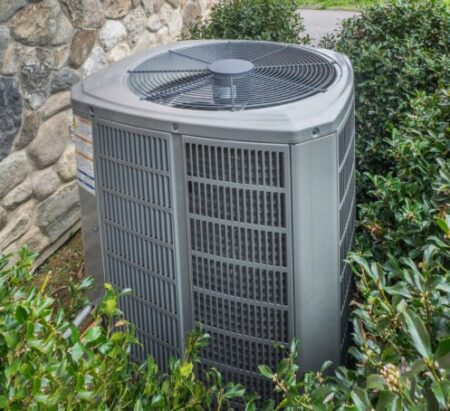
One of the most important metrics in the HVAC industry is the seasonal energy efficiency ratio, or SEER. A SEER rating gives you the ability to find out how efficient a heat pump or air conditioner is. A higher SEER number indicates that the system uses less energy. For homeowners who want to maximize efficiency, minimize electricity bills, and make greener decisions, knowing what SEER ratings mean is vital.
What Are SEER Ratings?
The fundamental formula for SEER is to divide the cooling output of an HVAC system over a typical cooling season by the total electric energy input. With this ratio, we can measure the system’s efficiency over a range of temperatures. When choosing HVAC systems, it’s important to examine the SEER rating since a higher value indicates greater energy efficiency.
Understanding SEER Ranges
SEER ratings range from 13 to 25 or more. Older HVAC systems typically have lower SEER ratings, while newer models showcase higher numbers, reflecting advancements in technology and energy efficiency. The range allows consumers to choose systems that align with their budget, energy-saving goals, and environmental considerations.
SEER 13-15
These are standard efficiency units. While they meet minimum efficiency standards, they may not offer the same energy savings as higher-rated systems.
SEER 16-20
Considered mid-range efficiency, these units provide improved energy efficiency and cost savings compared to standard models. They are a great choice for homeowners looking to balance advanced efficiency with manageable upfront costs.
SEER 21 and Above
These are high-efficiency units that offer significant energy savings. Although they come with a higher upfront cost, the long-term savings can outweigh the initial investment. These systems are particularly beneficial in areas with extreme temperatures, maximizing comfort and efficiency.
What Are the Latest Changes to SEER Ratings?
In response to growing environmental consciousness and the need to lessen human impact on the planet, we’ve seen several changes to SEER ratings. In fact, decisions made by the United States Department of Energy affect HVAC systems’ SEER ratings regularly. In order to make well-informed judgments when updating or replacing their HVAC equipment, homeowners need to stay updated about these developments.
More recent revisions to SEER criteria promote enhanced sustainability and energy efficiency by calling for the installation of more efficient systems. Homeowners now have more choices than ever before to increase efficiency and decrease their carbon footprint. This is all a result of manufacturers developing systems with greater energy efficiency to meet new SEER rating standards.
How Do SEER Ratings Affect Costs?
When calculating how much money an HVAC system will cost to run, SEER ratings are quite important. Although higher SEER units usually have a higher price tag, the money you’ll save on energy costs over time can make the purchase worth it. Think about things like local utility bills, weather, and how often you use the system to get a feel for how SEER ratings affect your bottom line.
A higher SEER unit is usually a cost-effective investment, especially in warmer regions where air conditioning is in high demand. Over the lifetime of the system, the efficiency improvements result in substantial savings on energy use. A higher SEER system is an investment that pays for itself in lower utility bills and more equity for homeowners.
Does HVAC Maintenance Improve SEER Performance?
Preventative HVAC maintenance is essential for keeping the system running efficiently and for a long time, which affects SEER performance. To achieve the predicted energy and cost savings, homeowners can ensure that their HVAC systems operate closer to their initial SEER ratings by following proper maintenance practices. Coil cleaning, refrigerant level monitoring, duct inspection, and component optimization are all part of routine maintenance. Reduced efficiency, increased energy use, and early system failure can all result from skipping maintenance.
Does a Higher SEER Make a Home More Green?
Choosing an HVAC system with a higher SEER rating is in line with eco-friendly and sustainable practices. When efficiency rises, your home uses less energy, which means it has less of an effect on the environment. Purchasing an energy-efficient HVAC system with a high SEER rating is a huge step toward a more sustainable lifestyle and a smaller carbon impact for homeowners.
Understanding SEER ratings empowers homeowners to make informed decisions about their HVAC systems. Balancing factors such as upfront costs, long-term savings, and environmental impact allows individuals to select systems that align with their goals for energy efficiency, sustainability, and overall home comfort. If you need help improving your home’s energy efficiency, Air Care Heating & Cooling is here to help. We offer a wide range of heating and cooling services, including preventative maintenance, indoor air quality testing, and more. Give us a call today to learn more about improving your home with a higher SEER HVAC system.
